Introduction
In this MathematicaVsR at GitHub project we show how to do progressive machine learning using two types of classifiers based on:
Tries with Frequencies, [AAp2, AAp3, AA1],
Sparse Matrix Recommender framework [AAp4, AA2].
Progressive learning is a type of Online machine learning. For more details see [Wk1]. The Progressive learning problem is defined as follows.
Problem definition:
In comparison, the typical (classical) machine learning algorithms assume that representative training data is available and after training that data is no longer needed to make predictions. Progressive machine learning has more general assumptions about the data and its problem formulation is closer to how humans learn to classify objects.
Below we are shown the applications of two types of classifiers as PLA's. One is based on Tries with Frequencies (TF), [AAp2, AAp3, AA1], the other on an Item-item Recommender (IIR) framework [AAp4, AA2].
Remark: Note that both TF and IIR come from tackling Unsupervised machine learning tasks, but here they are applied in the context of Supervised machine learning.
General workflow
The Mathematica and R notebooks follow the steps in the following flow chart.
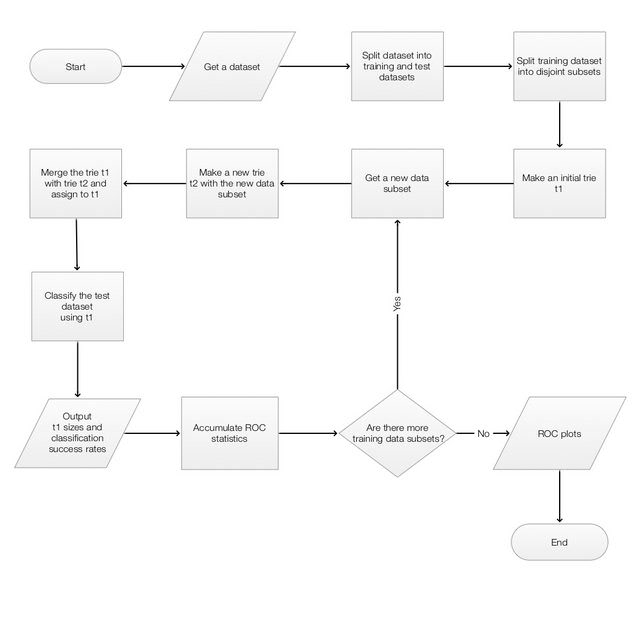
For detailed explanations see any of the notebooks.
Project organization
Mathematica files
R files
Example runs
(For details see Progressive-machine-learning-examples.md.)
Using Tries with Frequencies
Here is an example run with Tries with Frequencies, [AAp2, AA1]:
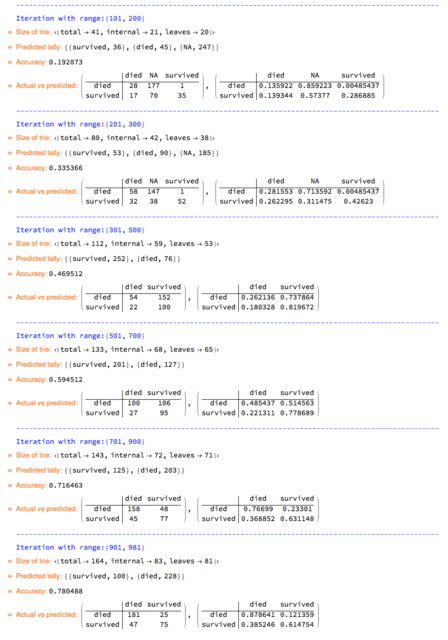 )
)
Here are the obtained ROC curves:
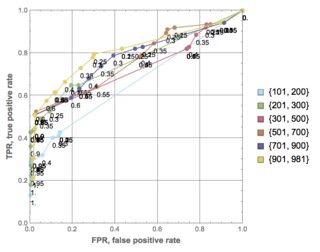
We can see that with the Progressive learning process does improve its success rates in time.
Using an Item-item recommender system
Here is an example run with an Item-item recommender system, [AAp4, AA2]:
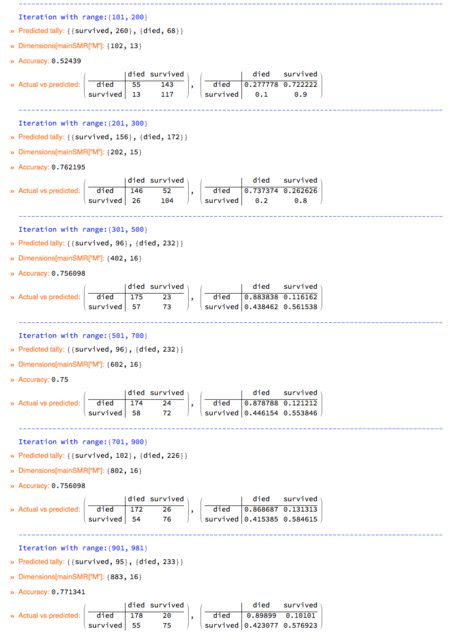
Here are the obtained ROC curves:
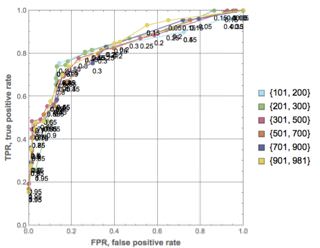
References
Packages
[AAp1] Anton Antonov, Obtain and transform Mathematica machine learning data-sets, GetMachineLearningDataset.m, (2018), MathematicaVsR at GitHub.
[AAp2] Anton Antonov, Java tries with frequencies Mathematica package, JavaTriesWithFrequencies.m, (2017), MathematicaForPrediction at GitHub.
[AAp3] Anton Antonov, Tries with frequencies R package, TriesWithFrequencies.R, (2014), MathematicaForPrediction at GitHub.
[AAp4] Anton Antonov, Sparse matrix recommender framework in Mathematica, SparseMatrixRecommenderFramework.m, (2014), MathematicaForPrediction at GitHub.
Articles
[Wk1] Wikipedia entry, Online machine learning.
[AA1] Anton Antonov, "Tries with frequencies in Java", (2017), MathematicaForPrediction at WordPress.
[AA2] Anton Antonov, "A Fast and Agile Item-Item Recommender: Design and Implementation", (2011), Wolfram Technology Conference 2011.